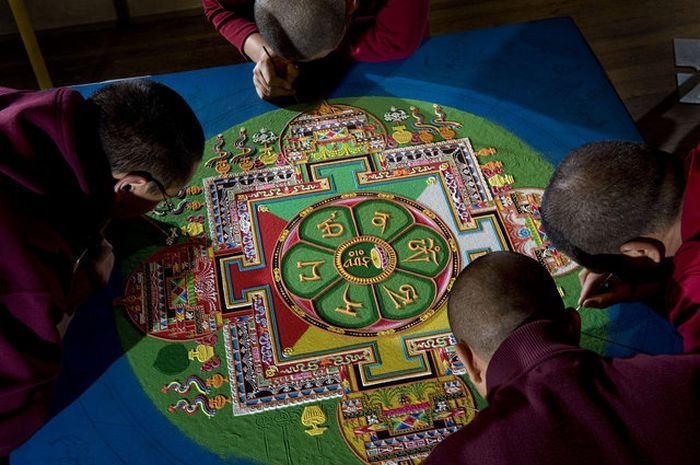|
|
Tibetan Monks Make Sand Mandala, Placerville, California, United States
|
Historically, the mandala was not created with natural, dyed sand, but granules of crushed coloured stone. In modern times, plain white stones are ground down and dyed with opaque inks to achieve the same effect. Before laying down the sand, the monks assigned to the project will draw the geometric measurements associated with the mandala. The sand granules are then applied using small tubes, funnels, and scrapers, until the desired pattern over-top is achieved. Sand mandalas traditionally take several weeks to build, due to the large amount of work involved in laying down the sand in such intricate detail. It is common that a team of monks will work together on the project, creating one section of the diagram at a time, usually working from the center outwards.
Themes
The Kalachakra Mandala for instance, contains 722 deities portrayed within the complex structure and geometry of the mandala itself. Other smaller mandalas, like the one attributed to Vajrabhairava contain sufficiently fewer deities and require less geometry, but still take several days to complete. Like all mandalas, these are meant as two-dimensional representations of what is supposed to be a three-dimensional environment. There is one particular case where a three-dimensional mandala can be experienced: Borobodur in Java, Indonesia.
|
|









